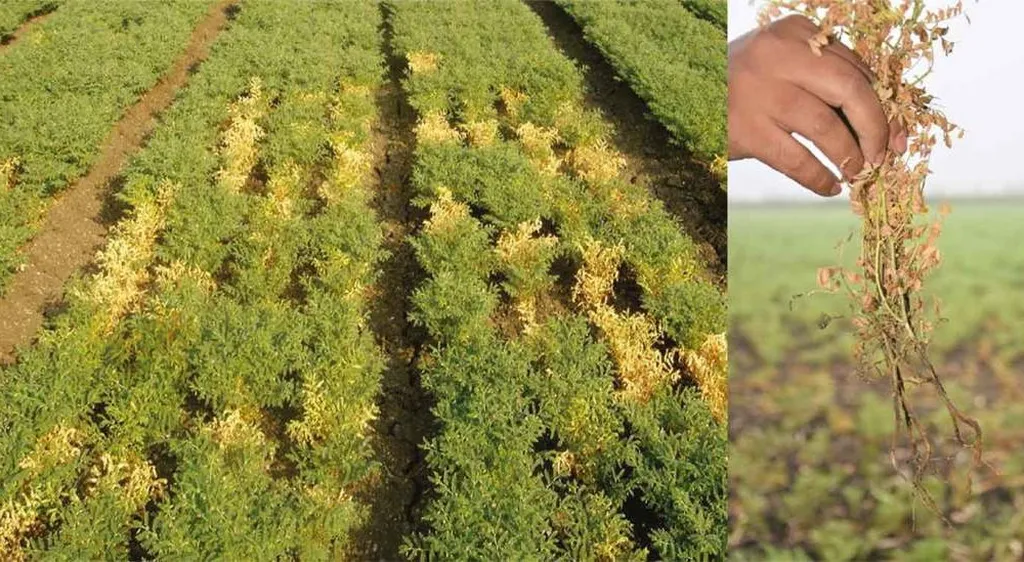In a significant stride towards combating one of chickpea’s most devastating diseases, researchers have successfully characterized Fusarium wilt resistance in diverse chickpea genotypes using established molecular markers. This breakthrough, published in the *International Journal of Bio-Resource and Stress Management*, could revolutionize chickpea cultivation and offer substantial benefits to the agriculture sector.
Fusarium wilt, caused by *Fusarium oxysporum* f. sp. *ciceris* race 1, has long plagued chickpea farmers, leading to substantial yield losses. The disease’s progression is determined by two major loci, H1 and H2. Dominant alleles at both loci result in early wilting, while homozygous recessive alleles at either or both loci confer late wilting or resistance, respectively.
The study, led by D. Ratna Babu from the Department of Genetics and Plant Breeding at Agricultural College, Bapatla, ANGRAU, Hyderabad, screened sixteen diverse chickpea genotypes using two established molecular markers: an Allele Specific Associated Primer (ASAP), CS-27700, and a RAPD marker, A07C417. These markers are linked to susceptibility at the H1 and H2 loci, respectively.
The results were promising. The ASAP marker CS-27700 was present in five genotypes, indicating susceptibility at the H1 locus. The RAPD marker A07C417 was present in all genotypes except two, ICC-12249 and WR-315, indicating susceptibility at the H2 locus. The absence of both markers in ICC-12249 and WR-315 suggested a resistant reaction, while the presence of both markers in other genotypes indicated early or late wilting reactions.
“This study demonstrates the power of molecular markers in plant breeding,” said lead author D. Ratna Babu. “By identifying resistant lines early, we can significantly accelerate the breeding process and develop wilt-resistant chickpea varieties much faster.”
The commercial implications of this research are substantial. Chickpea is a vital crop for millions of farmers worldwide, and Fusarium wilt poses a significant threat to its production. The ability to quickly and accurately identify resistant genotypes can lead to the development of wilt-resistant varieties, ensuring food security and economic stability for farmers.
Moreover, the use of molecular markers complements conventional breeding methods, making the process more efficient and targeted. As D. Ratna Babu noted, “This approach can hasten the progress of breeding programs, ultimately benefiting farmers and consumers alike.”
The research also opens up new avenues for future studies. Understanding the genetic basis of wilt resistance can pave the way for more sophisticated breeding strategies, such as marker-assisted selection and genetic engineering. These advancements could further enhance the resilience of chickpea crops against Fusarium wilt and other diseases.
In conclusion, this study represents a significant step forward in the fight against Fusarium wilt in chickpeas. By leveraging the power of molecular markers, researchers can develop more resilient crop varieties, ensuring a stable food supply and economic benefits for farmers. The findings, published in the *International Journal of Bio-Resource and Stress Management*, underscore the potential of modern biotechnology in addressing agricultural challenges and shaping the future of farming.

